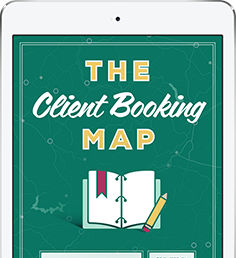
If you blog for your business, you know exactly how challenging it can be to get content created and published week in, week out.
Unlike a blogger who’s business is their blog, you’ve got 97 other things on your to-do list. So while you know you “should” be blogging, it’s harder than it seems.
First things first. Let’s just acknowledge that you’re not the only one who struggles with blogging. In fact, most business owners I talk to cite three big challenges when it comes to their blogging: having time to blog, being consistent and knowing what to blog about.
And these aren’t things I hear every now and then. These are the three things I hear every single day from Scoop clients and our community, so I wanted to round them up in a blog post to help you get on the road to making blogging less of a chore.
Challenge #1: Having Time to Blog
Time’s the thing we all wish we had more of, as no matter who you are or what you do, your time every single day is limited to 24 hours. And in there, we need to do more than just run our business, right?
Sleep and family and self-care all need to happen, so when blogging is left to the 8 p.m. time slot when you’re completely wrecked after a busy day, it’s no wonder it’s a struggle.
It’s time for a bit of tough love. You need, as the boss of your business, to decide how important blogging really is and what the exact role of blogging is to your business.
If your blog is doing it’s job, it should be bringing in new followers, new subscribers and new customers. If not, you don’t have a real business blog – you’ve got a make-work hobby project. {I know that’s harsh, but you’re blogging for BUSINESS, and if it’s not supporting it, you need to rethink it.}
If blogging is important to your business, you need to make it a priority. Which means scheduling time for it in your calendar and not just fitting it in where you can.
The same way you schedule anything else in your week, schedule your blog post creation time. If you can, create a standing weekly date with yourself and be realistic about how much time you really need.
If that’s not doable, look for a chunk of time each month where you can batch your content. Maybe you take one Friday a month and write your four posts for the month, get the images ready and schedule them.
The important part here is that you have a plan that dedicates quality time for you to create your content. Make that time untouchable so that you stick to the plan and actually have the space you need to write your posts.
Action Step: Take out your weekly calendar now and schedule a block of time for blog post creation once a week for the next 12 weeks. Make a date with yourself and keep it.
Challenge #2: Being Consistent
Let’s face it, as an entrepreneur, you’re likely an ideas person or a creative. So this whole consistency thing can be hella hard because quite frankly, it can feel like a grind.
And that routine can mean we get bored and lose momentum. I get it, I really really do, and I’m right there with you.
But think of it this way…
You know what separates the pros from the rest of the pack? Consistency.
You know what helps you get seen? Consistency.
You know what breeds trust from potential customers and clients? Consistency.
Consistency suddenly got way more interesting for you and your blog now didn’t it?
But let’s make this practical. You know consistency matters, but how do you translate that into action?
Create a system. (I know you just groaned, I heard it!)
Having a solid system in place for everything that needs to happen every time to research, write, edit, finalize, and publish a blog post is a magical thing. It helps you assign a timeline and put things on autopilot so it’s not sucking up valuable headspace week after week.
If you’re really time crunched, that same system gives you a framework to get help and create accountability for yourself in the blogging process. I know for me, the fact that I have people on my team waiting for the posts I write, not to mention deadlines to adhere to, makes it a non-negotiable every week.
When you’ve got a great system in place it can actually free you up to do other things and be more creative.
Action Step: Create your blogging system now, including what steps are needed, who does what and the deadlines each week. Be sure to document what tools you’ll use and any other supporting information.
If you want help with setting up a blogging system, I share my templates and checklists in the free Blog Planner Map. This will save you oodles of time getting this non-sexy stuff set up to help you create consistent blog content to grow your business. Click here to grab it now.
Challenge #3: Coming Up with Ideas on What to Blog About
It’s pretty hard to blog when you don’t know what you’re actually blogging about.
Many times, we start a blog without a clear picture of exactly what the plan is for that blog. Or we dive in and just start writing without a real idea of our content strategy for the blog.
A content strategy is essentially the GPS for blog posts that helps ensure you’re creating content that will serve your audience and reach your business goals.
While you may know your goal is to sell 3 coaching packages a month or get 100 new email subscribers, do you know exactly how you’re going to do that with your content? What themes will you cover? Who exactly are you speaking to?
Your content strategy should help you define those questions and more so that you’re not just picking topics out of thin air when you sit down to write.
If the idea of a content strategy sounds like too much work and has your head spinning, start by picking three key themes that you’ll explore on your blog that align with your business goals. {Just three themes okay? Not 10, because that’s going to get messy for you later on.)
Action Step: For each theme, brainstorm five topics for each theme that support your business overall and are in sync with anything you may be promoting or selling. By doing that, you’ve got a good start on creating a content calendar, or at least a hit list of topics you can work from.
The Recap: Overcome Your Blogging Challenges with Some Planning Now
Blogging for business doesn’t have to be tedious or terrifying, it’s up to you to plan ahead so you have time, can get consistent and know what you’re writing about.
If you need help with that plan, you’ll definitely want a copy of the Blog Planner Map which is packed full of the exact tools and templates we use with our high-end blogging clients.
P.S. If you need ideas on what to blog about, we’ve got 52 of them right here for you.




